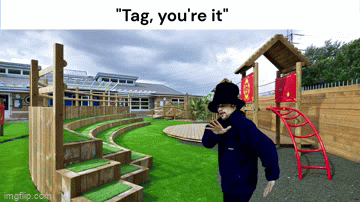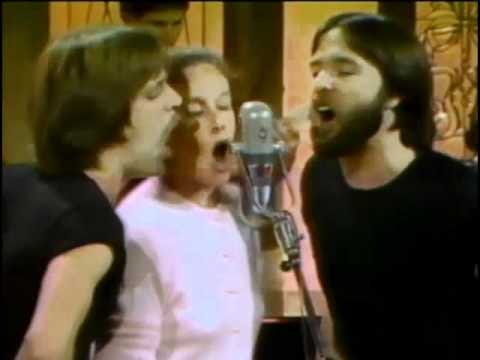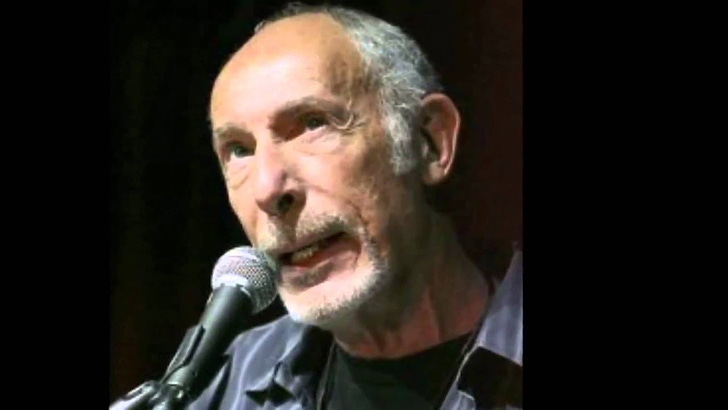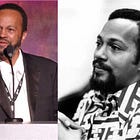Tune Tag #20 with Nick S, Pt. 2: Bob Marley, Laura Nyro, Dixie Cups, Meters, Martin Mull
Buckle up for a musical journey across the Northern Hemisphere, as Nick leads us from the home of reggae to the birthplace of Crescent City fonk, and the streets of New York to the Hills of Beverly!
Hey, Nick!
Nick’s up for his sophomore effort on the Tune Tag! Witness his first TT, here:
And, Nick’s Tune Tag, Part 3 is here:
Refreshing our memories, Nick (who’s in his late 40s and resides in NW Washington state), while not a writer on Substack, is a voracious reader on the site, and a valued friend of FR&B who reads everything we publish, and eagerly adds his valuable contributions to our comment sections!
He describes himself as “a middle-aged geek; I have interests in politics, and am enjoying reviving my interest in music. I have been interested in science fiction and role-playing games, but at this point I feel mostly nostalgia for them.”
Welcome, Nick! Let’s Tag Tunes…again!
Nick’s song #1 sent to Brad: Peter Tosh, "Johnny B. Goode," 1983 (studio; live version, 1987, here):
Nick’s rationale: I grew up around music. My parents were folkies, many of their friends were musicians, and it was familiar that people would come over for dinner, and then everyone would play music. I would listen for a while and wander off to read a book.
It was a real gift to have that exposure, but it was also intimidating. Music felt like something for adults. I was very aware that I was around people who were engaged with and cared about music, and it seemed like a huge learning curve to get to that point, so I found other interests. I liked some songs (usually because of the lyrics), but it wasn’t until I went to college in the mid-’90s that I had more space to develop my interests.
At that point, I started building a collection without much of a specific focus. An early CD was a Peter Tosh compilation. I never got particularly into reggae, but I enjoyed how much of Tosh’s personality comes through in his music (not an easy person, but clearly deeply invested in his art).
He makes “Johnny B. Goode” his own. It is complete; you don’t need the original to understand his version. Chuck Berry’s original performance is all about hustle; the joy and sweat and ferocity of hitting it big. Peter Tosh makes the story feel mythological. His Johnny is like a Jamaican musical John Henry (and, like John Henry, one doubts that his story will end well, but we meet him growing into his power).
As a Tune Tag selection, I’m curious how Brad will respond. There are a number of options to work with, but it’s such an iconic song that sets a certain standard. Last time I selected songs with an emphasis on lyrics; this starts us off with more of a groove. I’m not expecting another reggae song.
Brad’s song #1 sent to Nick: Bob Marley and the Wailers, “Sugar, Sugar,” 1969
Nick’s response: Hmm, he called my bluff. Looking it up, it’s a canny selection: Bob Marley and Peter Tosh were long-time musical partners, and it is a cover version of a song that may also be iconic (Wikipedia says that “Sugar Sugar” is “widely regarded as the apotheosis of the bubblegum music genre”) and it’s a cover released in the same year as the original recording, which is reminiscent of:
Unlike “You Were On My Mind,” this cover does not replace the original template for the song.
Nick’s follow-up: This song irritated me on first listening [Brad: Welcome to Bubblegum, Nick, a sub-genre some have described as being similar to enduring novocaine-free dentistry! Don’t worry—like brain freeze, it gets better over time].
Back to Nick: The sound was harsh, particularly in the treble. But, listening with a different, less-good pair of headphones, it sounded much better.
Brad’s rationale: Just matching reggae artists with this Archies bubblegum smash, which got to #1 on charts in 17 different countries including the U.S. and UK! I had no idea The Wailers (or any reggae artist, for that matter) had covered this 1969 Archies classic until I stumbled across it.
of “AnEarfull” Substack (and former Tune Tagger, himself), reminds me that, on The Wailers “Sugar Sugar” cover, it’s actually Peter Tosh singing lead as Bob Marley (under the alias Donald Marley) was living in Wilmington, DE, and working both as a DuPont lab assistant, as well as a fork lift operator for the Chrysler plant near Newark, NJ in the late ‘60s. He, therefore, had nothing to do with the song, according to Rolling Stone’s Timothy White.It puts me in the mind of imagining Bob Dylan covering the 1910 Fruitgum Company’s 1968 “Yummy Yummy Yummy” (frankly, a cover we’d love to hear)! From their 1969 Saturday morning network TV cartoon The Archie Show, here’s the gang with their official music video:
Andy Kim and Jeff Barry wrote “Sugar Sugar,” with Barry producing.
A decade later, Barry co-wrote and produced a complete demo recording of “Light Years Away,” a song co-written and sung by FRONT ROW & BACKSTAGE exclusive contributor, Stephen Michael Schwartz. Stephen tells the story of the song, and you can hear the rare demo here:
Nick’s song #2: Laura Nyro & Labelle, “I Met Him On A Sunday (Ronde-Ronde),” 1971
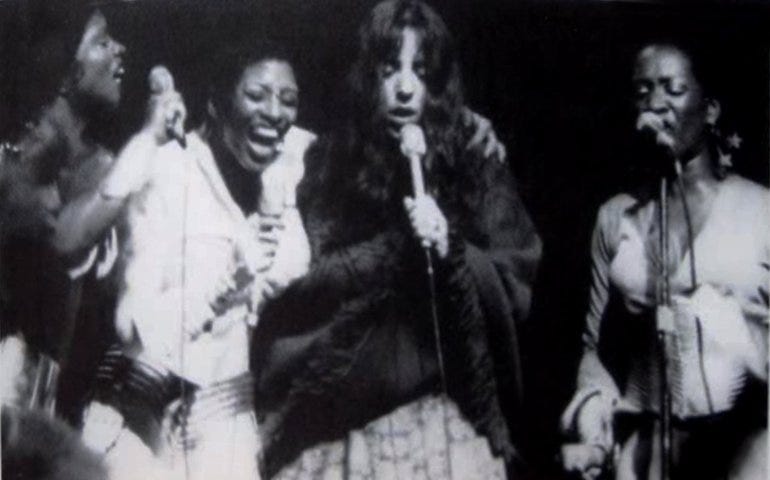
Brad’s response: Guessing we’re doing rock oldies/classics, side-stepping into the abundant girl-group lane, and I couldn’t be happier👏doo-lang doo-lang doo-lang👏. This one is huge: Kenny Gamble and Leon Huff producing LaBelle doing The Shirelles: Let that sink in. The album was recorded at Philly’s Sigma Sound with the late, legendary Thom Bell co-arranging strings and horns. More about the influential Bell can be read here:
Unusual for girl groups of the ‘60s, The Shirelles actually wrote their eventual Top 50 hit, “I Met Him on a Sunday (Ronde Ronde),” for their Passaic (NJ) High School talent show in 1958! The Shirelles were Shirley Owens (they got their name using her first syllable, tacking on the feminine “elles”), Doris Coley, “Micki” Harris, and Beverly Lee.
Nick’s rationale: Brad made a strong choice; I want to rise to the occasion. Thinking about bubblegum pop, I arrive at this 1971 Laura Nyro cover which is just pure joy. From the album’s liner notes (written by Amy Linden for the 2002 re-issue), the story of the recording process is amazing:
The studio was booked for a week, yet by the 6th day nothing had been recorded because everyone was having way too good a time vibing. The schedule grew so tight that Patti [LaBelle] actually bet Huff a sizable chunk of change that the songs could be knocked out in a few hours. ... “Gonna Take a Miracle” (album) is first takes, partly because everyone knew the songs by heart but mainly because there was simply no time.
Going back to my memory of sitting and listening to people sing together in the living room, this feels like that sort of music-making. It’s loose, collaborative, and it feels like they’re singing for each other as much as for the audience.
The first Laura Nyro album I bought was the 1997 various-artists tribute compilation, Time and Love (I believe after watching the Sports Night 1999 TV episode, “Eli's Coming,” and looked up the song). I later happened upon Gonna Take A Miracle, and immediately loved it.


